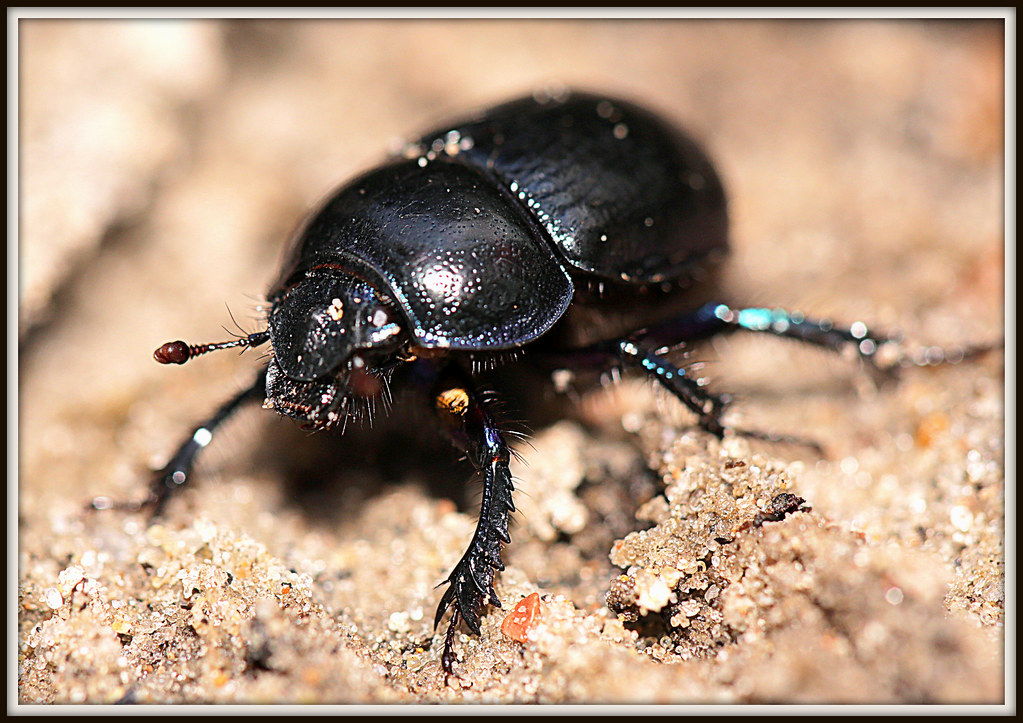In the vast pantheon of ancient Egyptian symbols, few are as recognizable or as deeply significant as the scarab beetle. This unassuming insect, known scientifically as Scarabaeus sacer, transcended its humble origins to become one of the most powerful religious icons in Egyptian civilization. The scarab’s natural behavior—rolling balls of dung across the desert sand—inspired profound theological connections in the Egyptian mind. What made this seemingly lowly creature so revered? Was it merely a sacred beetle, or did its role as nature’s recycler elevate it to divine status? The answer lies in understanding how ancient Egyptians viewed the natural world as a mirror of cosmic truths, where even a dung beetle could embody the mysteries of creation, rebirth, and the daily journey of the sun across the sky.
The Natural History of the Scarab Beetle

The scarab beetle that captivated ancient Egyptian imagination belongs to the family Scarabaeidae, with the species Scarabaeus sacer being most commonly associated with religious symbolism. These beetles are remarkable for their distinctive behavior of collecting animal dung, forming it into balls, and rolling these balls across the ground. Female scarabs lay their eggs within these dung balls, which provide both protection and nourishment for developing larvae. This recycling behavior makes scarabs essential components of desert ecosystems, where they help break down animal waste and return nutrients to the soil. The adult beetles have a metallic sheen that can appear in hues of black, blue, or green, with characteristic ridged forewings that protect their delicate flying wings underneath. Their physical appearance—rounded back and flat underside—lent itself perfectly to the amulet forms that would become so prevalent throughout Egyptian history.
From Dung Roller to Solar Symbol

The transformation of the scarab from mundane insect to cosmic symbol represents one of ancient Egypt’s most brilliant metaphorical leaps. Egyptians observed the beetle’s habit of rolling balls of dung across the desert and saw in this action a parallel to the sun’s movement across the sky. The round dung ball resembled the sun, while the beetle’s persistent pushing mirrored the force that moved the solar disk from east to west each day. This connection was strengthened by the scarab’s emergence from the earth, which paralleled the sun’s daily rebirth. The Egyptian name for the scarab, kheper (or xpr), shared its root with their word for “to come into being” or “to transform,” further cementing the beetle’s association with creation and regeneration. What modern observers might dismiss as merely a beetle pushing waste became, in Egyptian eyes, a daily reenactment of cosmic creation—the humble insect unwittingly performing divine work.
Khepri: The Scarab-Headed Sun God

The scarab beetle’s solar associations became personified in the deity Khepri, who represented the morning sun and the concept of rebirth and creation. Often depicted as a man with a scarab beetle for a head, or as a full scarab beetle, Khepri was responsible for rolling the sun across the sky each day, just as the scarab rolled its ball of dung across the sand. Khepri formed part of a tripartite solar deity: Khepri was the morning sun, Ra represented the midday sun at full strength, and Atum embodied the evening sun. In Egyptian mythology, Khepri was self-created, having emerged from nothingness at the beginning of time, mirroring the Egyptians’ observation that scarab beetles appeared to spontaneously generate from the earth. This misconception arose because they did not observe the beetles hatching from eggs laid in the dung balls buried beneath the sand, instead seeing only adult beetles seemingly emerging from the ground without explanation.
Scarabs in Funerary Practices
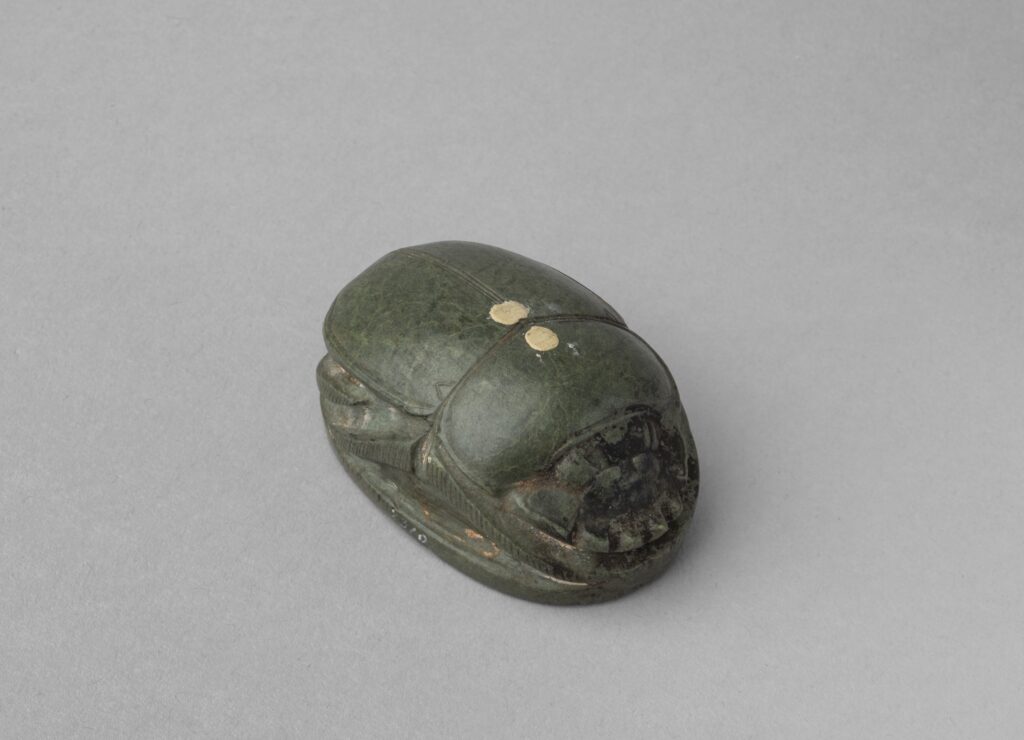
Perhaps nowhere was the scarab’s symbolic power more evident than in Egyptian burial practices, where heart scarabs played a crucial role in the journey to the afterlife. These large amulets, often made of green stone like nephrite or basalt, were placed over the heart of the deceased during mummification. The heart scarab served a vital function: preventing the heart (which Egyptians believed contained a record of all one’s deeds) from testifying against its owner during the weighing of the heart ceremony in the afterlife. Inscribed on many heart scarabs was Chapter 30B from the Book of the Dead, essentially a spell commanding the heart not to bear witness against the deceased. Some elite burials contained hundreds of smaller scarab amulets distributed throughout the wrappings, each one a potent symbol of rebirth and protection. The presence of these scarabs transformed the tomb from a place of ending to a cosmic womb from which the deceased would be reborn, just as the sun was reborn each morning.
The Art of Scarab Making
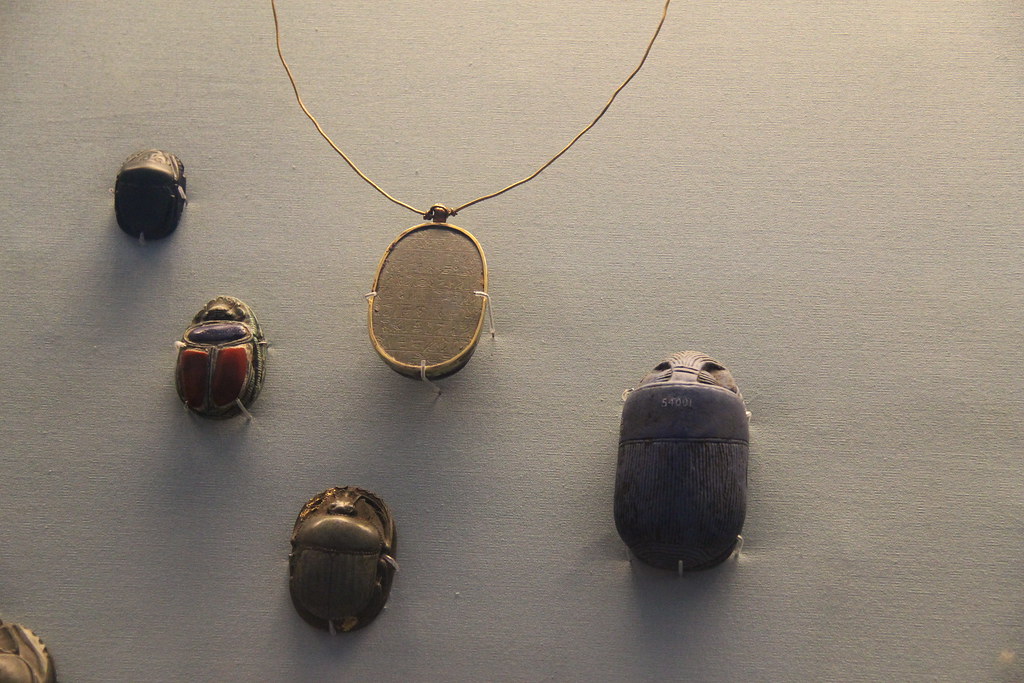
The production of scarab amulets became a sophisticated craft spanning thousands of years of Egyptian history. Artisans created scarabs from a wide variety of materials, including faience (a ceramic-like material with a vitreous coating), steatite (soapstone), various semiprecious stones, and occasionally precious materials like gold or silver for royal commissions. The manufacturing process typically involved carving the beetle form on the convex upper side, complete with head, thorax, wing cases, and legs, while the flat underside might be inscribed with hieroglyphs, designs, or left plain. Early scarabs from the Middle Kingdom (circa 2055-1650 BCE) were often more naturalistic in their depiction of the beetle, while later examples became increasingly stylized. Specialized workshops employed artisans who did nothing but produce these amulets, demonstrating their immense cultural and economic importance in ancient Egyptian society.
Scarabs as Administrative Seals

Beyond their religious significance, scarabs served practical administrative functions as seals throughout Egyptian history. Officials would use scarab seals pressed into clay to mark documents or secure containers, functioning much like a modern signature or tamper-evident seal. These administrative scarabs typically featured hieroglyphic inscriptions on their flat bases, often including the names and titles of officials or institutions. The portability and distinctive shape of scarabs made them ideal for this purpose, as their rounded backs provided a convenient handle for pressing the flat, inscribed base into soft clay. During the Second Intermediate Period (circa 1650-1550 BCE), the practice of using scarabs as seals became particularly widespread, with evidence suggesting a complex bureaucratic system relying heavily on these distinctive objects. Archaeologists have recovered numerous clay sealings bearing scarab impressions from administrative buildings, offering valuable insights into ancient Egyptian governmental organization and record-keeping practices.
Royal Name Scarabs and Commemorative Issues
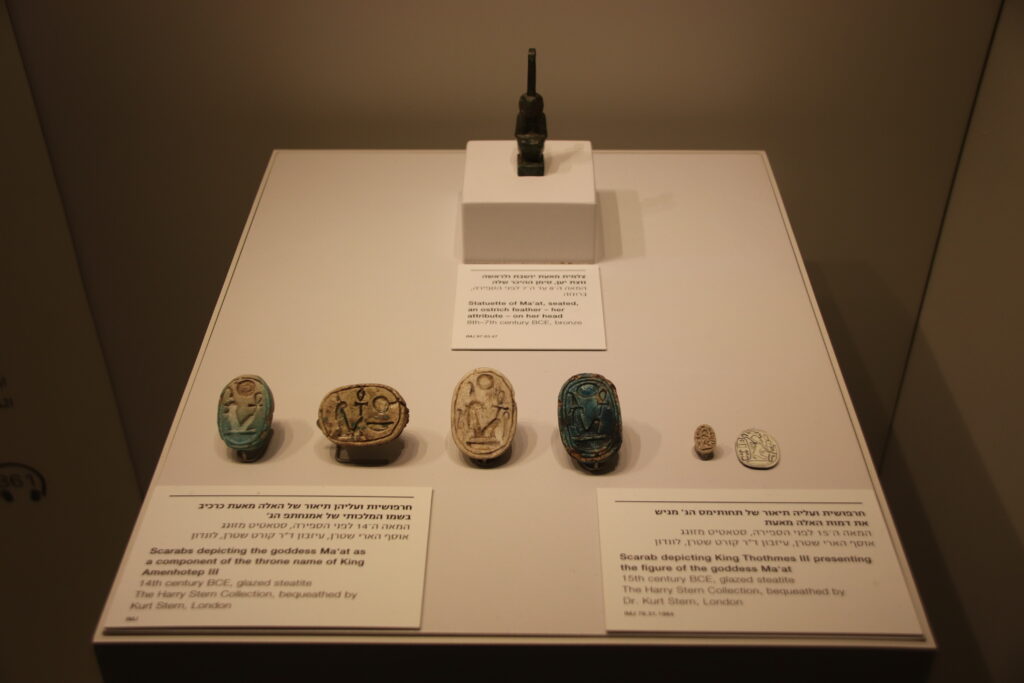
Kings of ancient Egypt employed scarabs as a form of royal propaganda, issuing special commemorative scarabs to mark significant events or achievements. The most famous examples come from the reign of Amenhotep III (circa 1388-1350 BCE), who distributed large scarabs announcing his marriage to Queen Tiye, describing his prowess at lion hunting, and commemorating the construction of an artificial lake for his queen. These royal scarabs, larger than typical amulets and carefully inscribed with detailed texts, served as ancient press releases, disseminating royal accomplishments throughout the kingdom and beyond. Scarabs bearing royal names (known as name scarabs) became particularly common during the New Kingdom period (circa 1550-1070 BCE), when they were produced in large quantities. These name scarabs functioned not only as political propaganda but also as talismans, allowing the bearer to invoke the divine protection associated with pharaonic power.
The Scarab in International Relations
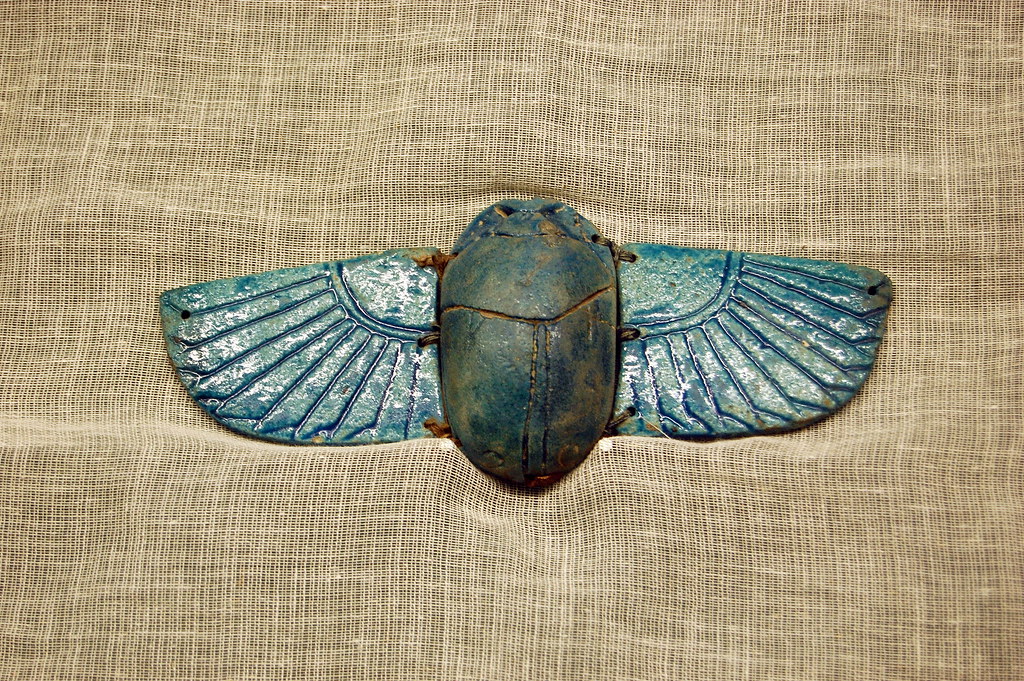
The popularity of Egyptian scarabs extended well beyond the Nile Valley, becoming important items of trade and diplomatic exchange throughout the ancient Mediterranean world. Archaeological excavations have uncovered Egyptian scarabs in Nubia, the Levant, Mesopotamia, Cyprus, Crete, mainland Greece, and as far west as Sardinia and the Iberian Peninsula. These finds demonstrate the extensive trade networks connecting Egypt to its neighbors and the high value placed on Egyptian religious symbols by foreign cultures. During the Late Bronze Age (circa 1550-1200 BCE), Egyptian scarabs became particularly fashionable among Canaanite elites, who adopted not only the physical objects but aspects of the religious symbolism as well. Local workshops in places like Cyprus and the Levantine coast began producing their own versions of scarabs, often incorporating hybrid designs that mixed Egyptian imagery with local artistic traditions. This international dimension of scarab distribution played a significant role in spreading Egyptian cultural influence throughout the ancient world.
Scarabs in Daily Life and Personal Protection

For ordinary Egyptians, scarab amulets provided protection and good fortune in everyday life, not just in death and burial contexts. People of all social classes wore scarabs as jewelry, with many examples found with loops or pierced for stringing on necklaces or attaching to bracelets. These personal scarabs were believed to harness the beetle’s associations with creation and renewal, providing the wearer with vitality and protection against harm. Pregnant women often wore scarabs to ensure safe childbirth, drawing on the beetle’s connections to creation and new life. Archaeological evidence suggests that some scarabs were specifically designed for particular protective functions, with specialized inscriptions or materials selected based on the intended use. The widespread ownership of scarabs across social classes indicates that, unlike many religious items restricted to the elite, these powerful symbols were accessible to a broad segment of ancient Egyptian society.
Evolution of Scarab Designs Through History

Scarab design evolved significantly across nearly three millennia of Egyptian history, providing archaeologists with valuable tools for dating and understanding cultural developments. Early Middle Kingdom scarabs (circa 2055-1650 BCE) typically featured simple geometric patterns or good-luck symbols like the ankh or djed pillar on their bases. During the Second Intermediate Period (circa 1650-1550 BCE), particularly under Hyksos influence, scarabs began to incorporate more elaborate designs, including spirals, concentric circles, and human and animal figures. New Kingdom scarabs (circa 1550-1070 BCE) often displayed more complex religious scenes, depictions of deities, or elaborate royal names and titles rendered in hieroglyphs. By the Late Period (circa 664-332 BCE), archaizing tendencies led artisans to revive earlier design styles, sometimes creating deliberate imitations of Middle Kingdom scarabs. Throughout these periods, changing production techniques, materials, and stylistic preferences created distinctive characteristics that allow modern scholars to place scarabs within specific historical contexts, making them invaluable chronological markers for archaeological sites.
The Scarab’s Connection to Egyptian Cosmology

The scarab beetle occupied a unique position within the complex cosmological framework of ancient Egyptian religion, connecting multiple layers of mythic thought. In Egyptian creation myths, particularly those centered around Heliopolis, the self-generating nature of the scarab mirrored the emergence of the creator deity Atum from the primordial waters of Nun. The daily rebirth of the sun represented by the scarab connected to broader cyclical concepts fundamental to Egyptian thought—the annual flooding of the Nile, the agricultural seasons, and the human life cycle from birth to death to rebirth. Scarabs also embodied the principle of transformation (xpr), which was central to Egyptian magical practices and funerary beliefs. The beetle’s natural metamorphosis from egg to larva to adult provided a powerful metaphor for transformation in other contexts, including the deceased’s transformation into an akh (transfigured spirit) in the afterlife. This rich web of associations made the scarab not merely one symbol among many, but a conceptual keystone that helped bind together disparate elements of Egyptian religious thought.
Modern Fascination with the Ancient Scarab

The enduring fascination with Egyptian scarabs continues into the modern era, influencing both scholarly research and popular culture. Archaeological interest in scarabs intensified during the 19th and early 20th centuries, with collectors and museums amassing large collections that continue to be studied today. The distinctive scarab shape has inspired jewelry designers for generations, with reproductions and adaptations appearing in Victorian Egyptian revival pieces, Art Deco designs, and contemporary fashion. In popular media, the scarab often appears in films, novels, and video games with Egyptian themes, though frequently with exaggerated magical properties that bear little resemblance to their historical significance. Modern archaeological approaches to scarabs focus less on their aesthetic qualities and more on what they can reveal about trade networks, administrative systems, and the spread of religious ideas across the ancient world. Despite sometimes being misrepresented in popular culture, genuine interest in understanding the scarab’s original significance has grown with advances in archaeological methods and increased scholarly attention to Egyptian material culture.
Conclusion
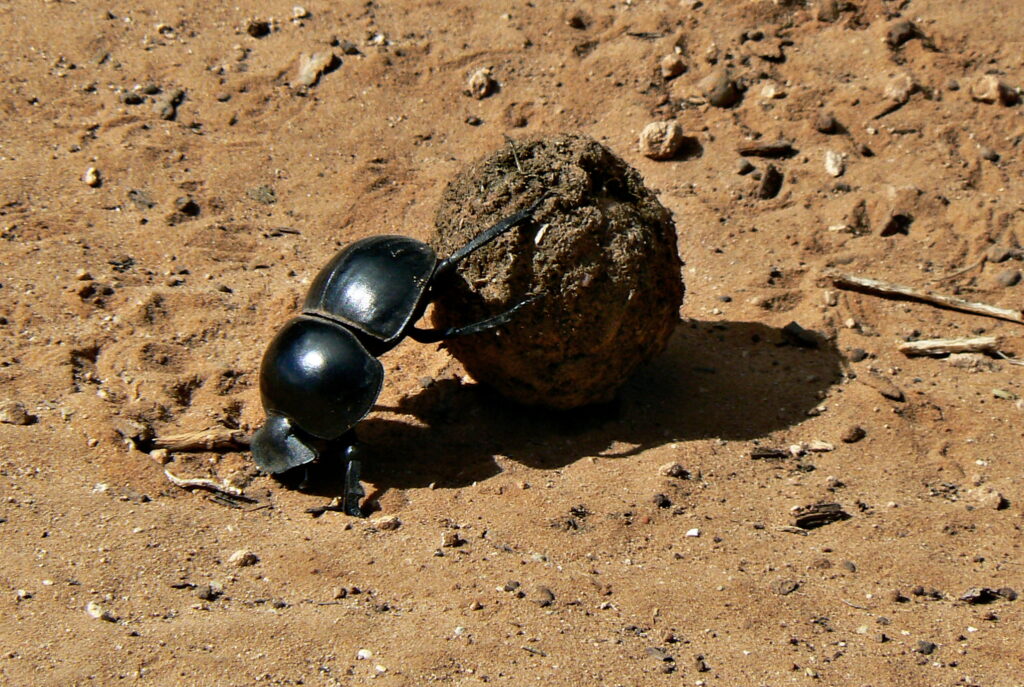
The story of the scarab in ancient Egypt reveals how profound meaning can emerge from careful observation of the natural world. Far from being merely a “divine garbage collector,” the scarab beetle embodied fundamental principles of Egyptian cosmology—creation, transformation, and renewal. Its journey from humble insect to cosmic symbol demonstrates the remarkable Egyptian ability to find sacred significance in the mundane, creating a system of symbols that would endure for thousands of years. Today, when we encounter scarab amulets in museum displays, we’re witnessing more than just decorative objects—we’re seeing physical manifestations of an ancient culture’s quest to understand the universe and humanity’s place within it. The sacred scarab stands as testament to the Egyptian genius for transforming natural observation into profound theological insight, reminding us that sometimes the most powerful symbols emerge from the most unexpected sources.

